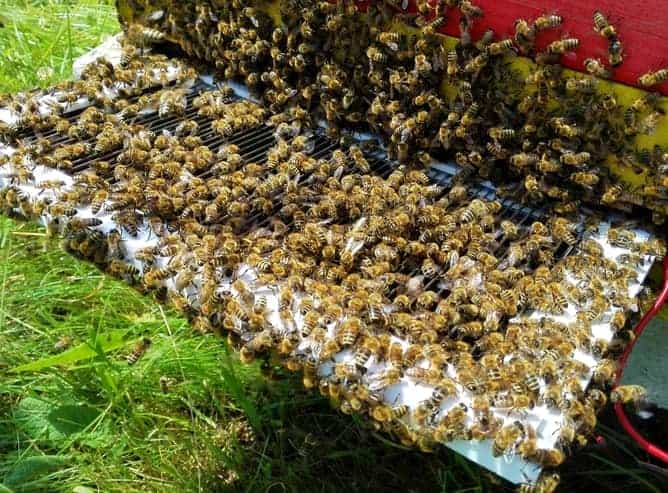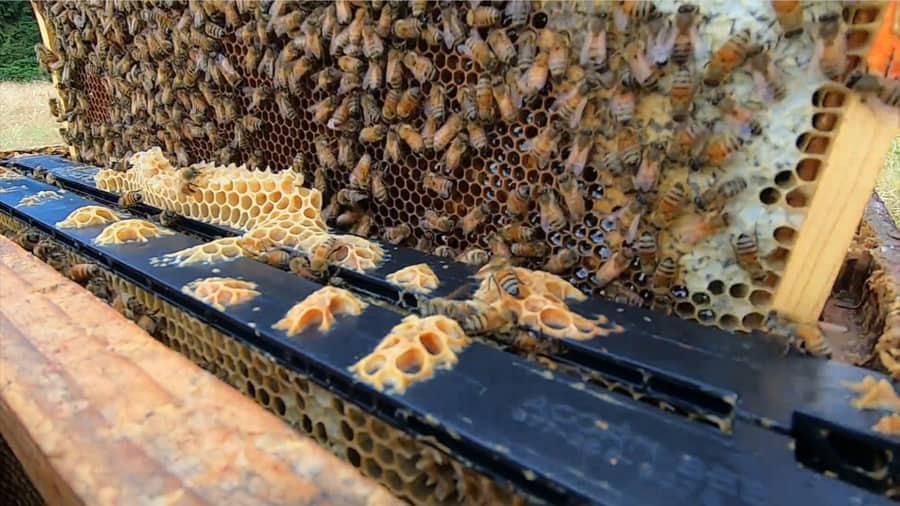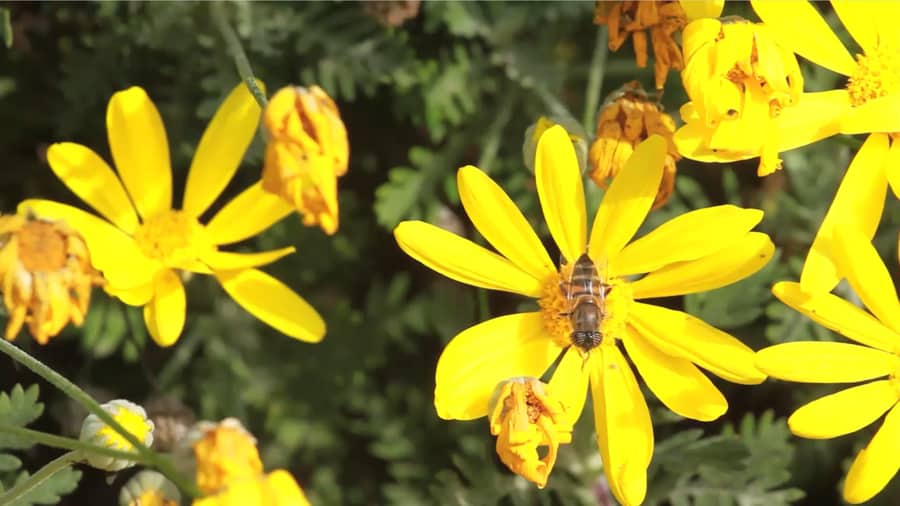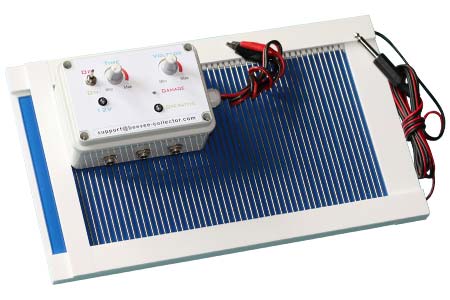I don’t think it’s enough to read online about beekeeping, as beekeeping tasks vary from season to season, and seasons tend to least differently in different parts of the world, even a country. I would suggest you become a member of a local beekeeping club.
Start attending local beekeeping meetings, and ask your future fellow beekeepers for advice, as they know everything about your local area much better than someone online (about the weather, season duration, where is best to place your hives, etc.). Beekeepers are known to be very talkative, especially when it comes to sharing our beekeeping stories, tips, and tricks.
This is how I started my beekeeping adventure, by joining my local beekeeping association, and finding a friend/mentor who taught me a lot about beekeeping in general, as well as about more specific things such as how to collect bee venom.
However, some things are applicable for wherever in the world you decide to set up your hives:
-
Start Beekeeping in Spring
By ‘start beekeeping’, I mean that you should set up your hives in spring. Spring is the season when bees start foraging. Generally speaking, stronger colonies begin foraging earlier than weaker colonies, at lower temperatures and less suitable light.
Moreover, hives that receive morning sun at the entrance start foraging earlier than the hives that do not receive morning sun. Foraging begins from 13 to 16 degrees Celsius, moderate foraging takes place from 16 to 18 degrees Celsius, and maximum foraging takes place starting from 18 degrees Celsius.
Spring is the time when you should take hives to your location, coat the top bars with beeswax, and put the bees into a hive when the weather is warm enough, at least 13 degrees Celsius, but better around 16 degrees Celsius.
-
Start Preparing Your Beekeeping Adventure by Late Fall at the Latest
In order to have everything ready for spring, you probably need to purchase some items (unless you are lucky and have inherited absolutely everything).
- Hives- you should pick whether you prefer to have vertical or horizontal hives. In vertical hives, frames are placed vertically, while in horizontal hives, bars are placed horizontally. No matter what type you choose, I would advise you to start small and see what works best for you. There are several different types of horizontal and vertical hives, but some of the most popular types are:
-
- Langstroth hives- a very popular type of a vertical hive. It consists of square boxed placed stacked on top of one another, with a protective roof. Boxes at the bottom are for brooding, while the top boxes the bees fill with comb and honey. Most often Inside you have ten frames for the honey, but sometimes you have only eight frames (easier to lift)
- Top bar hive- the oldest type of hives, an example of a horizontal hive. Individual bars are placed across the top of the hive. The bees construct their comb down from the bars. These hives are easily managed, and there is no need for heavy lifting as in Langstroth hives.
- Frames- frames could be made from wood or plastic. Frames could be regular or made, especially for queen rearing or drone trapping.
- Bees- you could find bees in the wild, buy a hive size colony and install it in your hive (frames with a queen, bees, brood, comb, and honey, or buy a package that contains a queen and worker bees. In terms of possible infections and diseases, the latest option is probably the safest. The bee community has three roles- the queen, the worker, and the drone. There is only one queen in each colony. The queen is the largest bee, and her responsibility is to lay eggs. Worker bees are female bees responsible for collecting food, building comb, guarding the hive’s entrance, etc. Drones are males, and their only task is to mate with the queen. Drones are larger than worker bees.
- Protective clothing (suits, shoes, and gloves)- buy a beekeeping suit, or you could wear, e.g. a shirt with cuffs that are tight around your wrists. Wear a veil, gloves, and high boots.
- Additional essential supplies
- Smoker- the bees do not like smoke, so the smoker comes in handy when you have some hive work to do
- Varroa treatment- Varroa mites are horrible parasites that attack the bees and brood (baby bees). If untreated, the colony may die.
- Small things such as queen catcher, helpful hive tools, etc.- buy them as needed
- As you get a hold of beekeeping, you will need to purchase honey extractor, jars, specialty equipment such as bee venom collectors, etc.
-
Why do You Want to Be a Beekeeper? Will You Hire Help? What Will You Collect? For Your Usage or are You Planning on Selling as Well?
These are big questions. You can focus on the following products:
- Honey: Or ‘golden nectar’- I am always looking forward to the day when we extract honey! We usually do it in late summer. You can sell honey to your local community, to supermarkets, to other beekeepers who have loyal buyers, but do not have enough honey this season, etc. The price of honey depends mainly on where in the world you are located. You can add value to honey by, e.g. mixing it with propolis and pollen. You can sell 1kg of this mix for four times higher price than 1kg of honey.
- Propolis: Or ‘bee glue’ is produced by bees and used for sealing small gaps in hives. The composition of propolis differs from location to location, from season to season. You could get up to 250 USD per 1kg of raw propolis, but then again, this depends on where in the world you are located, to whom you are selling. You could also make and sell propolis tincture. You could buy propolis traps that replace the inner cover on the hive. When the trap is full of propolis, remove it, freeze it in a plastic bag, and after a few hours, take it out, and bang it against any hard surface, and collect whatever falls out. You could also collect propolis from hive scrapings, but this propolis will also contain other things such as wax, dead bees, etc., so you would need to soak the scrapings in water- contaminants float, while propolis sinks.
- Pollen: Pollen can be sold as a food supplement for people, but also to beekeepers who are raising queens. It is usually in short supply. You could get around 30 USD per 1kg. Bees collect pollen in sacs attached to their legs. To harvest the pollen, you should buy a ‘com’ and set it up at the hive entrance.
- Bee venom: If you want to collect bee venom, you should at minimum purchase a bee venom collector and black jars to store bee venom. Bee venom is mainly sold to the pharmaceutical and beauty industry. Unless you have a way to arrange a meeting with the big pharma and beauty industry, it is best to contact bee venom resellers. The price of bee venom depends on its quality, and quality depends on the storage of bee venom (it can oxidize if not properly stored, which has an impact on the quality of bee venom) — the lower the quality, the lower the price. The general rule of thumb is that for the lower quality grade you would get around 30 USD per gram, while for the best quality, the price can go up to 350 USD per gram. If you were to extract melittin, which is an active ingredient in bee venom, the price could be 120,000 USD per gram. However, melittin is mainly sold in mg, and in that case, the price can be up to 120 USD per mg.
- Royal jelly: Harvesting royal jelly is cruel, in my opinion, and I do not harvest it. However, if you want to harvest it, there is a demand in the health and beauty industry.
- Beeswax: There are plenty of uses of beeswax, so it is never hard to find a buyer.
- Bees: Some people are growing only queens, some are selling whole bee colonies. This is a lucrative business.
- Beehive air: Apparently, beehive air helps people who have respiratory problems such as asthma sufferers. I do not know any beekeeper who is offering this option, nor I tried it, but I have seen several articles on this topic.
- Renting honeybees for pollination: This isn’t exactly a product of honeybees, but you could rent your bees to big orchids for pollination. This is a win-win situation, or you and for orchid owners.
-
Beekeeping Vocabulary
Here is some beekeeping vocabulary for total beginners, so that you are not confused when talking with beekeeping experts (as lost and confused as I was, almost 20 years ago, at my first beekeeping meeting).
- Colony: consists of a queen, worker bees, and drones
- Brood: baby bees
- I mentioned already in this article the queen, worker bees, drones, Varroa, etc
Beekeeping is a relaxing hobby/side business/primary source of income.
But, most of all, beekeeping is science, a magical world based on logic and knowledge, which, if you want to become competent in beekeeping, you can easily acquire.






